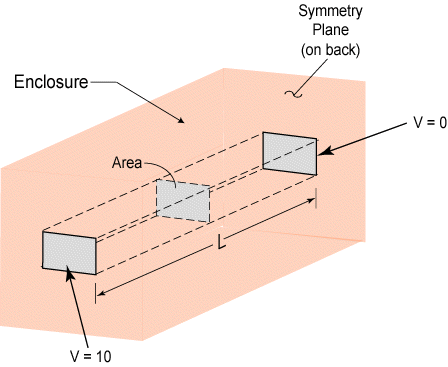This feature allows you to apply an electric potential (voltage) to a solid source conductor body. A voltage excitation is required on a conductor body to establish a ground potential. You may also apply one to apply a non-zero voltage excitation at another location to initiate current flow. Voltage excitations may only be applied to faces of the solid source conductor body and can be defined as constant or time-varying.
To apply a voltage excitation to a solid source conductor body, right-click the Conductor object under the Magnetostatic environment object in the tree whose Conductor Type is set to Solid, and select Voltage from the Insert drop-down menu, or click the Voltage option on the Context tab.
You define the voltage by magnitude and phase angle in the Details pane, according to the equation below.
V = Vocos(ωt+ϕ)
Vo is the magnitude of the voltage (input value Voltage), ω is the frequency, and ϕ is the phase angle. For a static analysis, ωt = 0.
Note: Voltage excitations may only be applied to solid source conductor bodies and at symmetry planes.

An applied voltage drop across the terminals of a conductor body will induce a current. In this simple example, the current in the conductor is related to the applied voltage drop, using the equations shown below. ΔV = applied voltage drop, I = current, ρ = resistivity of the conductor (material property), L = length of the conductor, and Area = cross section area of the conductor.
ΔV = IR
R = (ρ*L)/Area


